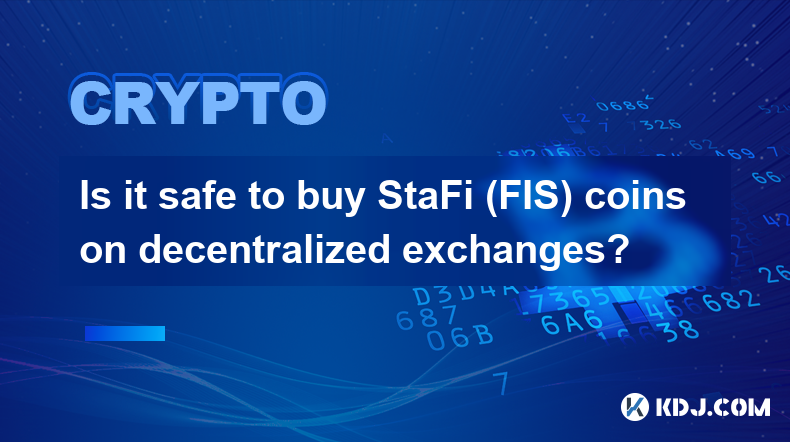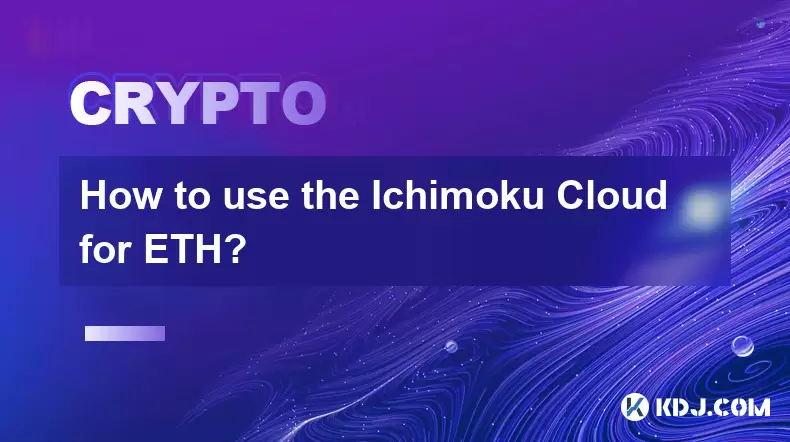-
 Bitcoin
Bitcoin $117400
-0.46% -
 Ethereum
Ethereum $3768
0.60% -
 XRP
XRP $3.551
2.09% -
 Tether USDt
Tether USDt $1.000
0.00% -
 Solana
Solana $203.2
11.30% -
 BNB
BNB $770.9
1.92% -
 USDC
USDC $0.9999
0.01% -
 Dogecoin
Dogecoin $0.2709
-0.02% -
 Cardano
Cardano $0.9024
4.49% -
 TRON
TRON $0.3139
0.60% -
 Hyperliquid
Hyperliquid $45.60
-1.41% -
 Stellar
Stellar $0.4730
-1.34% -
 Sui
Sui $4.025
2.15% -
 Chainlink
Chainlink $19.79
2.19% -
 Hedera
Hedera $0.2724
-2.39% -
 Avalanche
Avalanche $25.93
3.05% -
 Bitcoin Cash
Bitcoin Cash $524.0
-1.83% -
 Shiba Inu
Shiba Inu $0.00001558
0.50% -
 Litecoin
Litecoin $116.7
-0.30% -
 UNUS SED LEO
UNUS SED LEO $8.996
0.00% -
 Toncoin
Toncoin $3.334
1.83% -
 Polkadot
Polkadot $4.506
0.34% -
 Uniswap
Uniswap $10.99
4.83% -
 Ethena USDe
Ethena USDe $1.001
0.03% -
 Pepe
Pepe $0.00001461
3.17% -
 Monero
Monero $320.3
-1.01% -
 Bitget Token
Bitget Token $4.935
0.36% -
 Dai
Dai $0.9998
0.00% -
 Aave
Aave $322.4
-1.25% -
 Bittensor
Bittensor $455.6
9.33%
Is it safe to buy StaFi (FIS) coins on decentralized exchanges?
It is crucial to evaluate the security measures implemented by decentralized exchanges (DEXs) listing StaFi (FIS), assess the regulatory landscape, and consider the reputation and track record of DEXs to minimize risks and ensure a secure trading experience.
Jan 06, 2025 at 03:10 pm

Key Points of StaFi (FIS) Decentralized Exchange Safety:
- Understanding the risks associated with decentralized exchanges (DEXs).
- Assessing the security measures implemented by DEXs listing StaFi (FIS).
- Evaluating the regulatory landscape and its impact on DEXs offering StaFi (FIS).
- Considering the reputation and track record of DEXs handling StaFi (FIS).
- Implementing personal security measures to safeguard assets when using DEXs.
Is It Safe to Buy StaFi (FIS) Coins on Decentralized Exchanges?
Decentralized exchanges (DEXs) have gained popularity as alternative platforms for trading cryptocurrencies, offering advantages such as peer-to-peer transactions, anonymity, and reduced third-party involvement. However, DEXs also present unique risks that investors should be aware of before engaging in trading.
Understanding the Risks Associated with DEXs
DEXs operate on a decentralized network, meaning that there is no central authority controlling the platform. While this decentralization provides advantages, it also introduces risks, including:
- Smart contract vulnerabilities: DEXs rely on smart contracts to facilitate transactions, and vulnerabilities in these contracts can lead to hacks and loss of assets.
- Counterparty risk: In DEX trading, there is always a counterparty involved, and the reliability of that counterparty can impact the safety of the transaction.
- Lack of regulation: Most DEXs operate outside of regulatory oversight, which limits recourse for investors in case of disputes or fraud.
Assessing the Security Measures of DEXs Listing StaFi (FIS)
When evaluating DEXs for StaFi (FIS) trading, it is crucial to assess the security measures they implement. These include:
- Robust smart contract auditing: DEXs should have their smart contracts audited by reputable third-party security firms to identify and mitigate vulnerabilities.
- Two-factor authentication (2FA): DEXs should offer 2FA to protect user accounts from unauthorized access.
- Secure storage of private keys: DEXs should use industry-standard practices to store users' private keys securely, such as hardware wallets and encrypted storage.
- Transparency and disclosure: DEXs should provide transparent information about their security protocols and policies, as well as disclose any known security incidents promptly.
Evaluating the Regulatory Landscape and Impact on DEXs
The regulatory landscape for DEXs is evolving rapidly. Some jurisdictions have implemented regulations specific to DEXs, while others remain in a grey area. It is essential to stay informed about regulatory developments and how they may impact the safety and availability of DEXs offering StaFi (FIS).
Considering the Reputation and Track Record of DEXs
The reputation and track record of DEXs are important indicators of their trustworthiness. Research the experience of other users with the DEXs you consider, including their experiences with security, customer service, and overall satisfaction. Additionally, check if the DEX has been involved in any notable security incidents or controversies in the past.
Implementing Personal Security Measures
In addition to assessing DEX security, investors should implement robust personal security measures to safeguard their assets when using DEXs. These include:
- Using strong passwords and 2FA: Create strong passwords and enable 2FA to protect your account from unauthorized access.
- Storing private keys securely: Use a hardware wallet or other secure storage solution to keep your private keys safe from theft or loss.
- Being cautious of phishing scams: DEXs are often targeted by phishing scams, so be wary of unsolicited emails or messages asking for your personal information or private keys.
- Double-checking transaction details: Before confirming any transaction, carefully review the details, including the amount, recipient address, and network fees.
FAQs Regarding the Safety of Buying StaFi (FIS) on DEXs
Q: What are the biggest risks associated with buying StaFi (FIS) on DEXs?
A: The biggest risks include smart contract vulnerabilities, counterparty risk, lack of regulation, and personal security issues.
Q: How can I assess the security of DEXs offering StaFi (FIS)?
A: Look for DEXs that implement robust security measures, such as smart contract audits, 2FA, secure storage of private keys, and transparency about their security protocols.
Q: What are some reputable DEXs for buying StaFi (FIS)?
A: The ranking of DEXs is constantly changing, so checking multiple sources for the latest information is recommended. Here are some reputable DEXs that have listed StaFi (FIS):
* Uniswap
* PancakeSwap
* Binance DEX
Q: What are the best practices for safeguarding my assets when using DEXs?
A: Use strong passwords, enable 2FA, store private keys securely, be cautious of phishing scams, and double-check transaction details before confirming.
Q: How does the regulatory landscape impact the safety of buying StaFi (FIS) on DEXs?
A: Regulatory uncertainty can affect the availability and safety of DEXs. Stay informed about regulatory developments and how they may impact the DEXs you use.
Disclaimer:info@kdj.com
The information provided is not trading advice. kdj.com does not assume any responsibility for any investments made based on the information provided in this article. Cryptocurrencies are highly volatile and it is highly recommended that you invest with caution after thorough research!
If you believe that the content used on this website infringes your copyright, please contact us immediately (info@kdj.com) and we will delete it promptly.
- XRP, Bitcoin, Ripplecoin: Navigating the Crypto Landscape in 2025
- 2025-07-22 20:30:13
- Cardano Ecosystem Watch: Can PayFi Token Remittix Trigger an ADA Overtake?
- 2025-07-22 20:50:13
- JasmyCoin Price Forecast: Chart Analysis Points to Potential Surge
- 2025-07-22 20:55:13
- Remittix, XRP, and Dogecoin: What's Hot in the Crypto Game Right Now?
- 2025-07-22 20:10:14
- BlockchainFX, PEPE, and USDT: What's the Buzz in the Crypto Jungle?
- 2025-07-22 18:50:12
- Ripple's RLUSD: Institutional Backing Fuels Stablecoin Ascent
- 2025-07-22 18:30:12
Related knowledge

What is Chainlink (LINK)?
Jul 22,2025 at 02:14am
Understanding Chainlink (LINK): The Decentralized Oracle NetworkChainlink is a decentralized oracle network designed to bridge the gap between blockch...

What is Avalanche (AVAX)?
Jul 22,2025 at 08:35am
What is Avalanche (AVAX)?Avalanche (AVAX) is a decentralized, open-source blockchain platform designed to support high-performance decentralized appli...

What is Polkadot (DOT)?
Jul 19,2025 at 06:35pm
Understanding the Basics of Polkadot (DOT)Polkadot (DOT) is a multi-chain network protocol designed to enable different blockchains to transfer messag...

What is Monero (XMR)?
Jul 21,2025 at 10:07am
What is Monero (XMR)?Monero (XMR) is a decentralized cryptocurrency designed to provide enhanced privacy and anonymity for its users. Unlike Bitcoin a...

How to add indicators to Ethereum chart on TradingView?
Jul 19,2025 at 07:15am
What Is an Ethereum Chart on TradingView?The Ethereum chart on TradingView is a visual representation of the price movement of Ethereum (ETH) over a s...

How to use the Ichimoku Cloud for ETH?
Jul 18,2025 at 09:56pm
Understanding the Ichimoku Cloud and Its ComponentsThe Ichimoku Cloud, also known as Ichimoku Kinko Hyo, is a versatile technical analysis tool that p...

What is Chainlink (LINK)?
Jul 22,2025 at 02:14am
Understanding Chainlink (LINK): The Decentralized Oracle NetworkChainlink is a decentralized oracle network designed to bridge the gap between blockch...

What is Avalanche (AVAX)?
Jul 22,2025 at 08:35am
What is Avalanche (AVAX)?Avalanche (AVAX) is a decentralized, open-source blockchain platform designed to support high-performance decentralized appli...

What is Polkadot (DOT)?
Jul 19,2025 at 06:35pm
Understanding the Basics of Polkadot (DOT)Polkadot (DOT) is a multi-chain network protocol designed to enable different blockchains to transfer messag...

What is Monero (XMR)?
Jul 21,2025 at 10:07am
What is Monero (XMR)?Monero (XMR) is a decentralized cryptocurrency designed to provide enhanced privacy and anonymity for its users. Unlike Bitcoin a...

How to add indicators to Ethereum chart on TradingView?
Jul 19,2025 at 07:15am
What Is an Ethereum Chart on TradingView?The Ethereum chart on TradingView is a visual representation of the price movement of Ethereum (ETH) over a s...

How to use the Ichimoku Cloud for ETH?
Jul 18,2025 at 09:56pm
Understanding the Ichimoku Cloud and Its ComponentsThe Ichimoku Cloud, also known as Ichimoku Kinko Hyo, is a versatile technical analysis tool that p...
See all articles

























































































